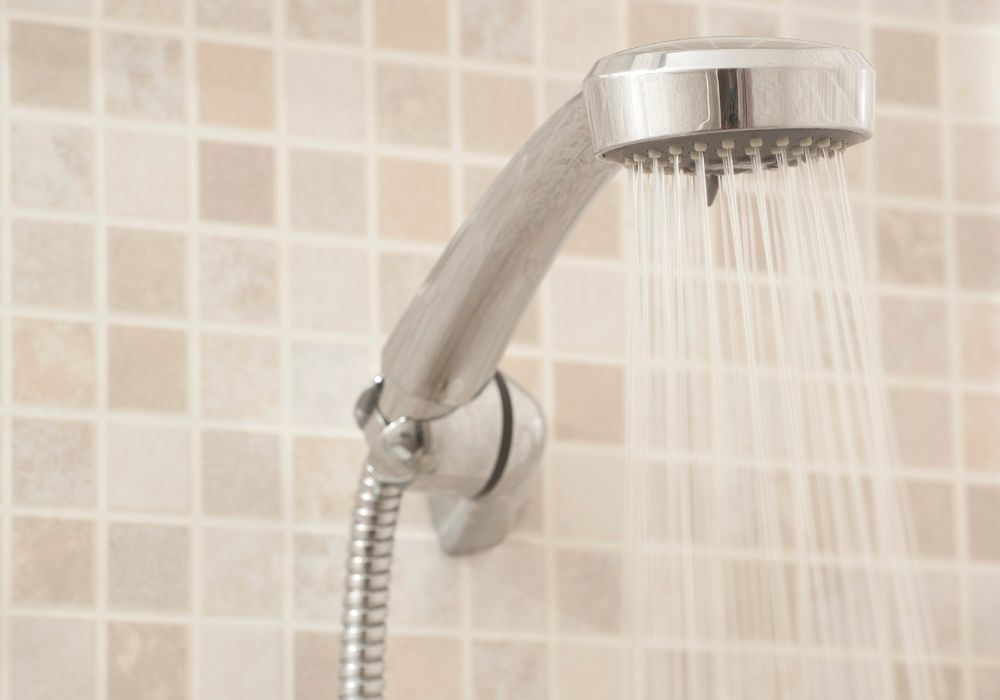Have you ever stepped into a shower and been outrageously disappointed? Either by low water pressure or a mismatched showerhead?
As not everyone knows, showerheads are vast, with several shapes, sizes, and styles. But when it comes to compatibility, the crucial question arises.
Are showerheads truly universal in size?
In this blog post, we’ll discover the truth about showerhead sizes. We will uncover important considerations. Then, equip you with the knowledge to choose the perfect showerhead for your bathroom!
Showerheads in the US and Canada follow a universal shower thread size. This is usually known as ½-inch NPT (National Pipe Thread). This standard size ensures that 99% of showerheads are compatible with standard pipes.
In other words, showerheads feature a 1/2-inch thread, making them universal. So, when choosing showerheads, you can rely on their ability to fit standard shower setups.
Are Showerheads Universal?

Yes. showerheads in the US and Canada generally adhere to universal thread size. This means they can be generally considered universal in size when it comes to fit.
The majority of showerheads have ½-inch pipe threads. This follows the standards set by National Pipe Thread (NPT).
However, there may be variations in sizes for older faucets. Most wall-mounted or handheld showerheads are typically designed to fit the existing plumbing.
National Pipe Thread (NPT)
National Pipe Thread (NPT) is a standard for tapered threads used in US plumbing fittings. It creates a tight seal by wedging the threads together.
In most cases, NPT threads have a taper rate of ¾-inch per foot or 1/16-inch per inch of length. They are commonly used in water, gas, and pneumatic systems.
Therefore, NPT threads are not compatible with straight threads.
Variations By Country
As mentioned, the US and Canada’s NPT standard showerhead thread size is 1/2 inch. Meanwhile, countries in Asia, Australia, Europe, New Zealand, and South Africa typically differ.
They follow the British Standard Pipe (BSP) for their plumbing fittings. BSP thread sizes may differ from NPT. Therefore, it’s important to consider the specific standards and measurements.
Size Exceptions
Regarding showerheads, there can be exceptions regarding the thread type used. Some showerheads may have NPT threads, while others may have BSP threads.
This means that the fittings on these showerheads will have different dimensions. Thus, requiring specific connections. Showerheads come in a wide variety of styles and sizes.
These can range from compact handheld models to larger fixed showerheads.
Unique Showerheads
Unique showerhead systems can include specialized features that set them apart. Some showerheads may have removable restrictors.
At the same time, antique showerheads may also have distinct characteristics from their modern counterparts.
Do All Shower Heads Fit Every Shower?

Yes, in the United States, most shower heads have the same ½” NPT threading size. This size ensures that shower heads fit the plumbing systems in American households.
This means that when you purchase a new showerhead, it is highly likely to have the same ½” NPT connection. As a result, it will be compatible with your shower’s plumbing.
When it comes to the types of shower head mounts, there are several options available. Here are three common types of showerhead mounts:
Wall-mounted shower heads are the most common and traditional type. These shower heads are usually attached to the wall with a shower arm or pipe. They provide a fixed position for the shower head.
Ceiling-mounted shower heads are directly installed into the ceiling of the shower area. These shower heads create a rainfall-like effect as the water flows straight down. They are a popular choice for modern and contemporary bathroom designs.
Bar mount shower heads feature a sliding bar that allows for adjusting & positioning. You can adjust it up or down along a wall-mounted bracket. Bar mount shower heads are particularly convenient for households with multiple users.
How Do I Know If My Shower Head Is Compatible?
To determine compatibility, check the fit of the shower head. Consider the arc of the shower head and the angle of your arm. At the same time, don’t forget the available headroom above the pipe.
Step 1. Determine The Size of The Shower Arm
Begin by measuring the length and diameter of your shower arm. Using a measuring tape or ruler, determine the overall length of the shower arm. These measurements will help you understand the size and specifications of the connection.
Step 2: Calculate the Inner and Outer Diameters
Use a plumbing tool to measure the inner and outer diameter of the shower arm’s connection. The inner diameter refers to the size of the opening where water flows through. At the same time, the outer diameter represents the overall thickness of the shower arm.
Step 3: Try a Few Different Shower Heads
Look for models that match the measured dimensions of your shower arm. Then align with your desired preferences. Consider factors such as spray patterns and water flow options—also, some additional features like massage jets or adjustable settings.
Is It Easy To Replace Shower Head?

Yes, replacing a showerhead is generally a straightforward task. With a few simple steps, you can successfully replace your shower head.
Consider replacing your existing showerhead with an energy-efficient, low-flow model. These shower heads conserve water while maintaining a satisfying shower experience.
The installation process is typically simple and can be generally done as a DIY project. Many models offer adjustable settings.
These allow you to customize the water flow to your preference. Not only will you enjoy the benefits of conserving water. You may also notice a reduction in your water bills.
Before purchasing a new showerhead, consider factors like flow rate & water efficiency labels. The market offers a wide range of energy-efficient shower heads to choose from.
It’s important to note that some showerheads may have specific installation instructions. So it’s advisable to refer to the manufacturer’s guidelines if provided.
How To Replace Shower Head?
Replacing a showerhead is a manageable DIY project with basic tools and a little care.
1. Gather the Needed Supplies
Before you begin, ensure you have all the necessary supplies handy. These typically include:
- adjustable wrench or pliers
- thread-sealing tape (plumber’s tape)
- cloth or towel
- new shower head
2. Disable the Faucet
Turn off the faucet to prevent any water flow during the replacement process. Then shut off the water supply to the shower.
3. Screw out the Current Shower Head
Loosen and unscrew the shower head using an adjustable wrench or pliers. Rotate it counterclockwise until it is completely detached from the shower arm.
4. Take Out Extra Dirt
Take a cloth or towel and clean the threads of the shower arm to remove any dirt, debris, or old plumber’s tape. It’s important to have clean threads for a proper seal and secure attachment of the new shower head.
5. Place the Thread-Sealing Tape On
Grab the thread-sealing tape and wrap it clockwise around the threads of the shower arm. This tape helps create a tight and leak-free seal when the new shower head is.
6. Attach the New Shower Head
Take the new shower head and align it with the threads of the shower arm. Begin by hand-tightening it by rotating it clockwise.
7. Look for Leaks and Check the Fit
With the new shower head attached, turn on the water supply. Then carefully inspect the connection for any leaks. Ensure that water flows smoothly from the new shower head.









